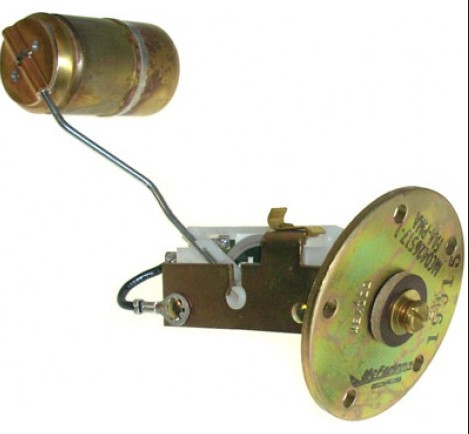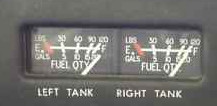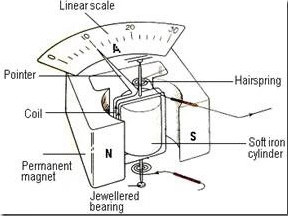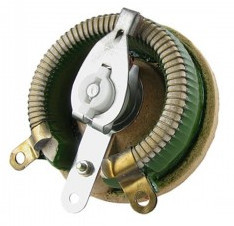AFAIK most planes have a fuel level sensor which is a hinged thingy with a floating thingy attached to it – here is a C150/152 one

and the fuel level causes the float to rotate a potentiometer (a variable resistor) to rotate. Then some simple electronics measure the resistance of this pot and indicate this on a primitive moving coil meter


It isn’t obvious why this should be as crappy as it is.
Can anyone explain it?
The linearity of a really cheap and dirty pot is of the order of a few % and same for a moving coil meter.
But most of the planes I used to rent had gauges which showed either full or empty and in between they just wobbled about. The wobbling is a separate issue and can be addressed with damping inside the indicator, or just running the system with a bit more current and using a stiffer spring inside the indicator.
Interestingly, when googling for some images I could rip off for this post I found some much better quality PMA replacement sensors for some popular types.
I’m not an electronics engineer, but I believe the problem is like it is with the volume controls on very old radios – the graphite strip on the potentiometer simply wears out and becomes like an on/off switch hence full and empty on the fuel gauge. Perhaps this is all wrong.
I’d love to hear about replacement sensors to improve the left tank readings on my plane. (The right hand tank reports much more accurately.)
The other thread on fuel checking applies here.
the graphite strip on the potentiometer simply wears out and becomes like an on/off switch hence full and empty on the fuel gauge
These pots are AFAIK wirewound so they should be robust – this is a pic of a low resistance one which shows the idea

and eventually the wire (or the wiper) will wear through, and then obviously you get a total failure. But not until then…
Since the pot is actually sitting in the fuel they must be using the standard “intrinsic safety” precautions whereby the voltage and available current are limited to values which cannot cause a spark which would ignite the fuel. I wonder how this is assured, in a scenario where a wire running past the gauge wire shorts to it?
Peter wrote:
But most of the planes I used to rent had gauges which showed either full or empty and in between they just wobbled about
Most of the planes you rented were probably old and shagged, too – since you’ve complained about them being shagged in the past :-)
The gauges actually do tend to work perfectly well if the system is in good condition/has been looked after. I used to fly an old Cessna 182 in our club (the last year of the C182 before they put back windows in) and the gauges were accurate. Similarly, the Grumman Tiger when I was in the US earlier in the year has accurate gauges.
I found that my ‘well cared for’ Cherokee was pretty accurate. I went through a serious phase of logging consumption vs the engine manual, how much fuel I put in, what showed if I dipped the tanks, and what showed on the gauges. It all seemed to work out. The only thing I learned was that you might not want to rely on the last bit of fuel in a tank (common sense). Consequently, on a long flight I prefer to pretty much run one tank dry and then finish with the entire reserve in the other tank.
One difficulty was that the tanks are non-linear when dipped with a stick (unless you have a calibrated stick), so I can see why people are confused. Also, there is still a lot of fuel left when you can see the tank floor below the filling nozzle (due too the angle of the tank) I don’t know how the gauge design incorporates the non-linearity (of course there are several ways… but which is it?).
However, the Russians have this sorted for the Yak 18T. With the fuel gauge switch in the centre (default position) it displays the total volume of both tanks, added together. If you flick the fuel switch to the left, it shows the left tank and to the right displays the right tank. I found the gauges perfectly accurate.
Peter wrote:
But most of the planes I used to rent had gauges which showed either full or empty and in between they just wobbled about
The long, flat tanks mounted in a wing with dihedral make it difficult to get a linear gauge indication out of float type sensors with short (geometrically non-linear) float arms. On some planes there are two float sensors wired in series, summing their resistance. One is outboard in the tank and the other is inboard, so you have four per plane. The outboard float moves first and is half way though its travel when the inboard float starts to move. This is better but still not outstanding, particularly when the electrical connections in the system build up resistance over time, biasing the signal towards empty. Initial installation has to be done carefully in any case, to make sure the pots are calibrated correctly – meaning bending the float arms slightly to get the correct ‘float on bottom of tank’ resistance from each. There are several ways to get it wrong.
Here come a few pictures of the Russian Yak style fuel senders and the great fuel indicator . These items are indeed very accurate but then they are definitely NOT typical western capitalistic crap as cheaply made as possible. I guess these Cessna/ Piper fuel indicators might be leftovers from the tape recorder stereo level displays , at least that is how they behave typically. The Russian senders are resistor wire types sealed by metal diaphragm for spark protection. Most Yak aircraft parts and wiring are very military quality, extremely strong, although the 18 T was never used by the army but purely for pilot licences for Aeroflot captains, no private flying existed in the USSR.
The rightmost indicator is the fuel clock and the right/left tank toggle switch below right side.
Vic
alioth wrote:
The gauges actually do tend to work perfectly well if the system is in good condition/has been looked after.
I don’t know about that. The 2016 Aquila A211 I finished my PPL on had crappy gauges right from the start, and it still has less than 400 hrs TT now so there was no time for it not to be well looked after.
Thanks Vic for the pictures of the gauge. I was going to try and dig some up.
I haven’t actually put eyes on the fuel level sensor for the Yak, so those pictures are also great. All told, a very serious piece of kit!!
Best regards.